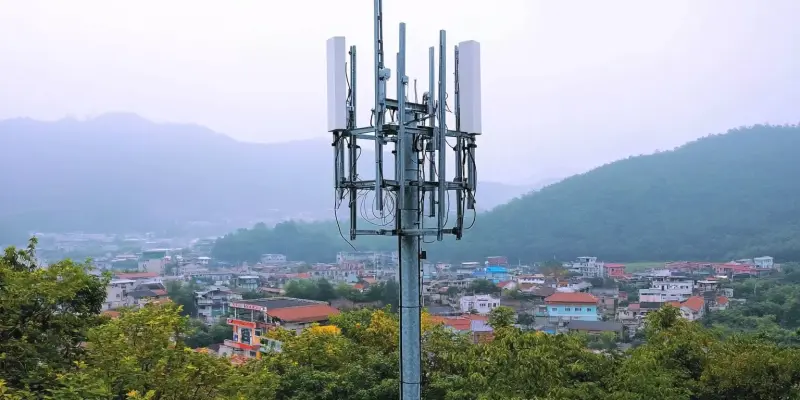The Lower Colorado River Authority (LCRA) is making significant strides in enhancing Texas utility services through the deployment of its private Long-Term Evolution (LTE) network on the 900 MHz spectrum. In collaboration with Anterix, a specialist in private wireless solutions, LCRA initially acquired 900 MHz licenses covering 68 counties in April 2023. Now, with an extension into an additional 34 counties, this initiative brings the total to 102 counties under the purview of LCRA’s private LTE network. This strategic move aims to bolster both operational insights and grid resilience across one of Texas’s most crucial infrastructure systems.
Expanding Network Capabilities
Ensuring Grid Resilience and Operational Efficiency
The primary objective of LCRA’s expanded LTE network is to significantly improve grid resilience while enhancing operational efficiency. By utilizing the 900 MHz spectrum, LCRA can deploy IoT asset monitoring tools and gain robust operational insights. This is a transformative step in managing their extensive network of 5,000 circuit miles of transmission lines and overseeing the lower 600 miles of the Texas Colorado River. The LTE network enables real-time data collection and analysis, which are crucial in maintaining grid stability and preemptively addressing potential issues.
Moreover, the network expansion not only supports LCRA’s internal operations but also aids in better coordination with external entities. Electric cooperatives, schools, and transit authorities operating within the coverage area stand to benefit from improved cellular broadband communication. The ability to share vital data and coordinate efficiently among these groups is expected to lead to more seamless operations and enhanced service delivery, highlighting the multifaceted advantages of leveraging modern communication technologies.
Broader Impact on Utility Services
LCRA’s strategic move is not just about local improvements; it is a part of a broader trend toward modernizing utility grids with advanced communication networks. The implementation of 900 MHz solutions by Anterix, who possesses comprehensive spectrum coverage across the mainland US, Alaska, Hawaii, and Puerto Rico, is paving the way for utilities to transition into more resilient and efficient operations. Anterix’s notable customers, including Ameren, Evergy, San Diego Gas & Electric, and Xcel Energy, showcase the utility sector’s growing trust in these innovative solutions.
The positive ripple effects of this initiative are likely to be felt across various sectors within Texas. Enhanced utility services mean more reliable electrical power for homes, businesses, and critical infrastructure, which is particularly significant given Texas’s vast and diverse landscape. This development reiterates the importance of adopting private LTE technology in addressing energy industry challenges, reinforcing grid security, and ensuring reliability.
Strengthening Strategic Partnerships
Collaborations with Industry Leaders
The collaboration between LCRA and Anterix underscores the value of strategic partnerships in fostering advancements within the utility sector. LCRA’s commitment to leveraging Anterix’s 900 MHz spectrum solutions highlights the mutual benefits that arise from such alliances. Stephen Wehner, LCRA’s executive vice president for enterprise resources, emphasized the critical role of the 900 MHz private LTE network in furthering LCRA’s mission. The enhanced capabilities provided through this network are key to supporting LCRA’s diversified service offerings.
Additionally, Anterix CEO Rob Schwartz noted that the ongoing agreement with LCRA demonstrates the extensive collaborations formed within the utility sector under the 900 MHz private network initiative. These partnerships are integral in driving innovation and addressing the sector’s evolving demands. By working together, industry leaders can develop comprehensive solutions that meet the diverse needs of utilities, ultimately resulting in improved service quality and operational efficiency.
Future Implications and Opportunities
The Lower Colorado River Authority (LCRA) has been making noteworthy progress in advancing Texas utility services by deploying a private Long-Term Evolution (LTE) network on the 900 MHz spectrum. Partnering with Anterix, a company that specializes in private wireless solutions, LCRA initially secured 900 MHz licenses for 68 counties in April 2023. With a subsequent expansion that includes an additional 34 counties, the initiative now encompasses a total of 102 counties under LCRA’s private LTE network. This strategic effort is designed to enhance both operational insights and the resilience of the electrical grid, critical aspects for one of Texas’s essential infrastructure systems. By implementing this advanced network, LCRA aims to optimize the management of its resources, improve communication channels, and ensure a more dependable utility service for millions of Texans. This move signifies a major step forward in modernizing utility services and infrastructure within the state, ensuring better performance, reliability, and overall efficiency.

